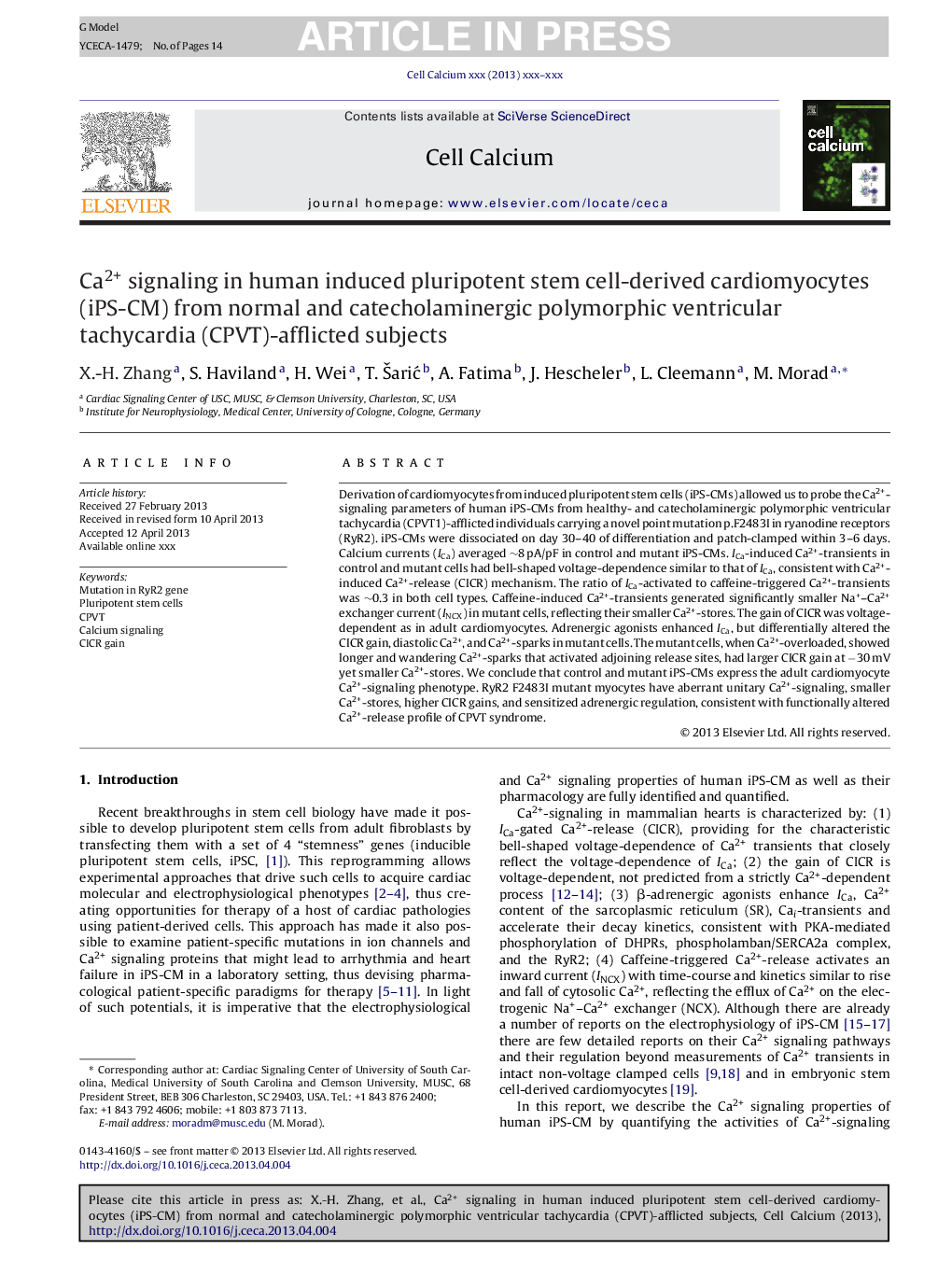| Article ID | Journal | Published Year | Pages | File Type |
|---|---|---|---|---|
| 10926336 | Cell Calcium | 2013 | 14 Pages |
Abstract
Derivation of cardiomyocytes from induced pluripotent stem cells (iPS-CMs) allowed us to probe the Ca2+-signaling parameters of human iPS-CMs from healthy- and catecholaminergic polymorphic ventricular tachycardia (CPVT1)-afflicted individuals carrying a novel point mutation p.F2483I in ryanodine receptors (RyR2). iPS-CMs were dissociated on day 30-40 of differentiation and patch-clamped within 3-6 days. Calcium currents (ICa) averaged â¼8Â pA/pF in control and mutant iPS-CMs. ICa-induced Ca2+-transients in control and mutant cells had bell-shaped voltage-dependence similar to that of ICa, consistent with Ca2+-induced Ca2+-release (CICR) mechanism. The ratio of ICa-activated to caffeine-triggered Ca2+-transients was â¼0.3 in both cell types. Caffeine-induced Ca2+-transients generated significantly smaller Na+-Ca2+ exchanger current (INCX) in mutant cells, reflecting their smaller Ca2+-stores. The gain of CICR was voltage-dependent as in adult cardiomyocytes. Adrenergic agonists enhanced ICa, but differentially altered the CICR gain, diastolic Ca2+, and Ca2+-sparks in mutant cells. The mutant cells, when Ca2+-overloaded, showed longer and wandering Ca2+-sparks that activated adjoining release sites, had larger CICR gain at â30Â mV yet smaller Ca2+-stores. We conclude that control and mutant iPS-CMs express the adult cardiomyocyte Ca2+-signaling phenotype. RyR2 F2483I mutant myocytes have aberrant unitary Ca2+-signaling, smaller Ca2+-stores, higher CICR gains, and sensitized adrenergic regulation, consistent with functionally altered Ca2+-release profile of CPVT syndrome.
Related Topics
Life Sciences
Biochemistry, Genetics and Molecular Biology
Cell Biology
Authors
X.-H. Zhang, S. Haviland, H. Wei, T. Å ariÄ, A. Fatima, J. Hescheler, L. Cleemann, M. Morad,
